Just a teaser. There is still some work to do…
The station will have a few more modules and I’ll add at least the 2 missing baseplates in the lower left corner. Detail photos will follow…
LL 928-C, my cargo version of the iconic LL 928. It’s able to carry a 8x16x8 “SCU” cargo container/module.
Back in 1978/1979 the LL 928 Galaxy Explorer was the “must have” for all Lego kids. I was lucky to get one for Christmas 1979 and I loved it. So, what’s better than an LL 928? Two ones! :-)) That was my first idea when I thought about expanding my Classic Space fleet a few months ago.
I already had collected a good amount of CS parts, I only needed a second pair of “LL 928” 1×4 bricks to build another LL928. With Bricklink, that wasn’t a problem. But then I thought that just having two identical ships would be quite boring. A new version with new capabilities would be much more exciting and more fun to play with.
One of my ideas was a cargo version of the LL 928, like a modern cargo airplane based on a passenger model. Thinking about that I realized that I still had only one spaceship to transport my new 8x16x8 Space Cargo Units (SCUs), so that would be the purpose of my new LL 928-C (C for cargo).
This time I started the design with real bricks, not with LDD. I started with the wing shape of LL 928, opened on the rear end to have an 8-wide interior cargo area instead of the 6-wide of the original model. The main design idea was an open structure enclosing the cargo like a frame, similar to the 6929 All-Terrain Vehicle or the 6980 Galaxy Commander.
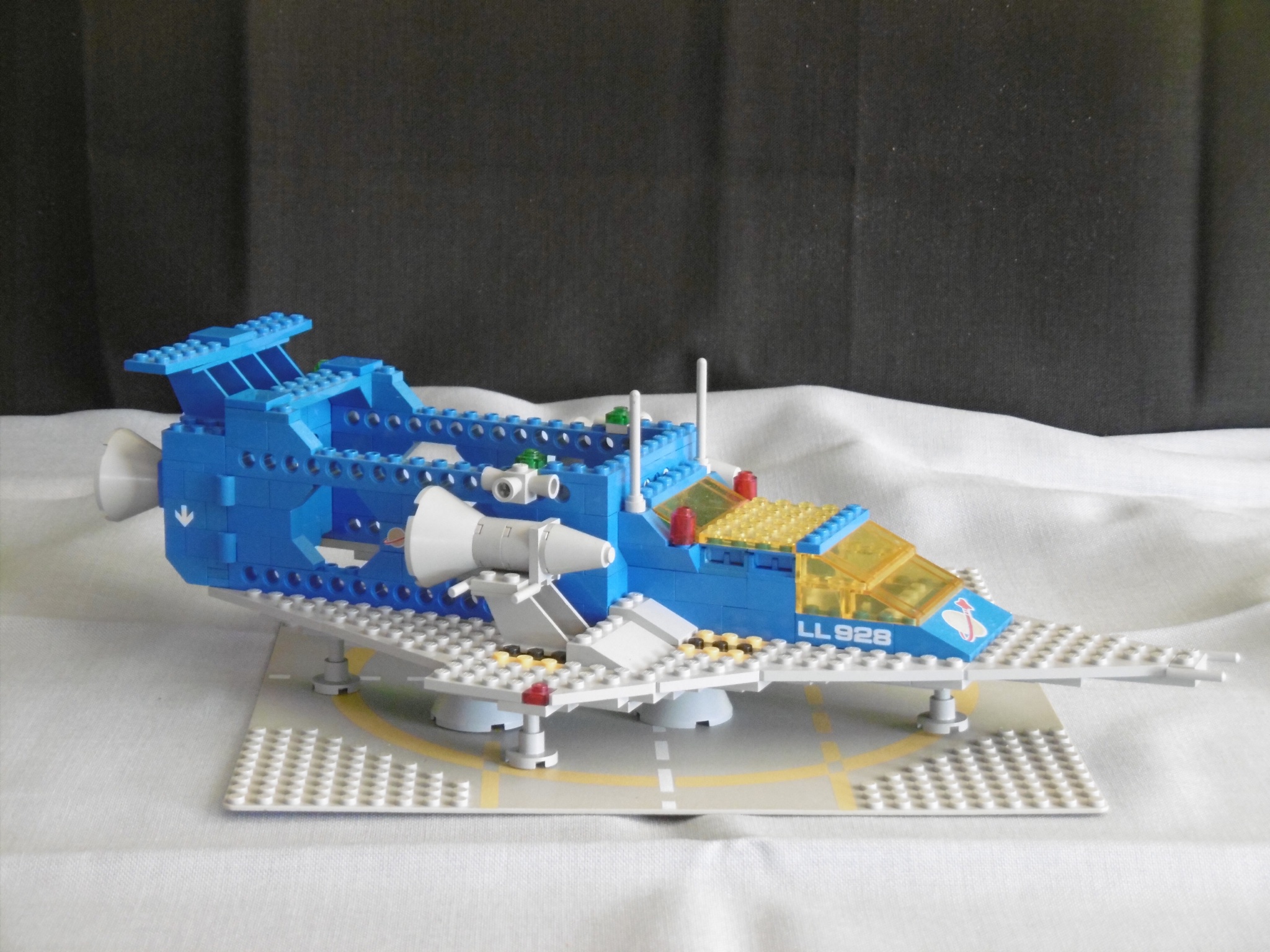 I built the rest of the ship around the cargo area, with a shorter cockpit area placed in front of it.
I built the rest of the ship around the cargo area, with a shorter cockpit area placed in front of it.
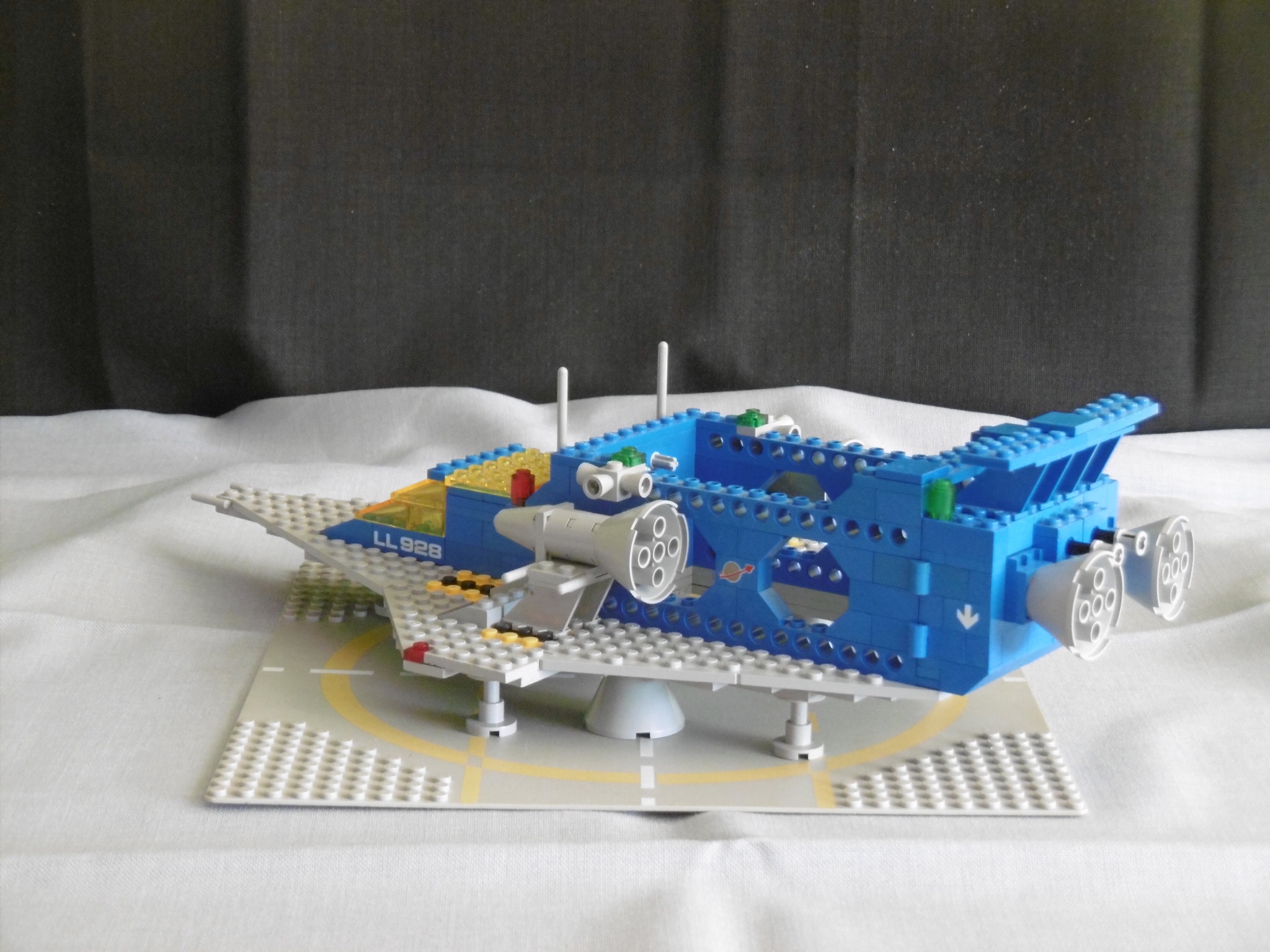 The rear end is an open frame built with four 1y16 Technic beams and some reinforcement between them. The cargo doors are very similar to the original 928. They are only one stud wider (each of them), with a locking mechanism added in the middle. I had to add an extra plate between the 2×2/2×2 brackets and the rocket engines to get the extra space for the mechanism in the middle.
The rear end is an open frame built with four 1y16 Technic beams and some reinforcement between them. The cargo doors are very similar to the original 928. They are only one stud wider (each of them), with a locking mechanism added in the middle. I had to add an extra plate between the 2×2/2×2 brackets and the rocket engines to get the extra space for the mechanism in the middle.
 Side view: You can see the open structure of the cargo area.
Side view: You can see the open structure of the cargo area.
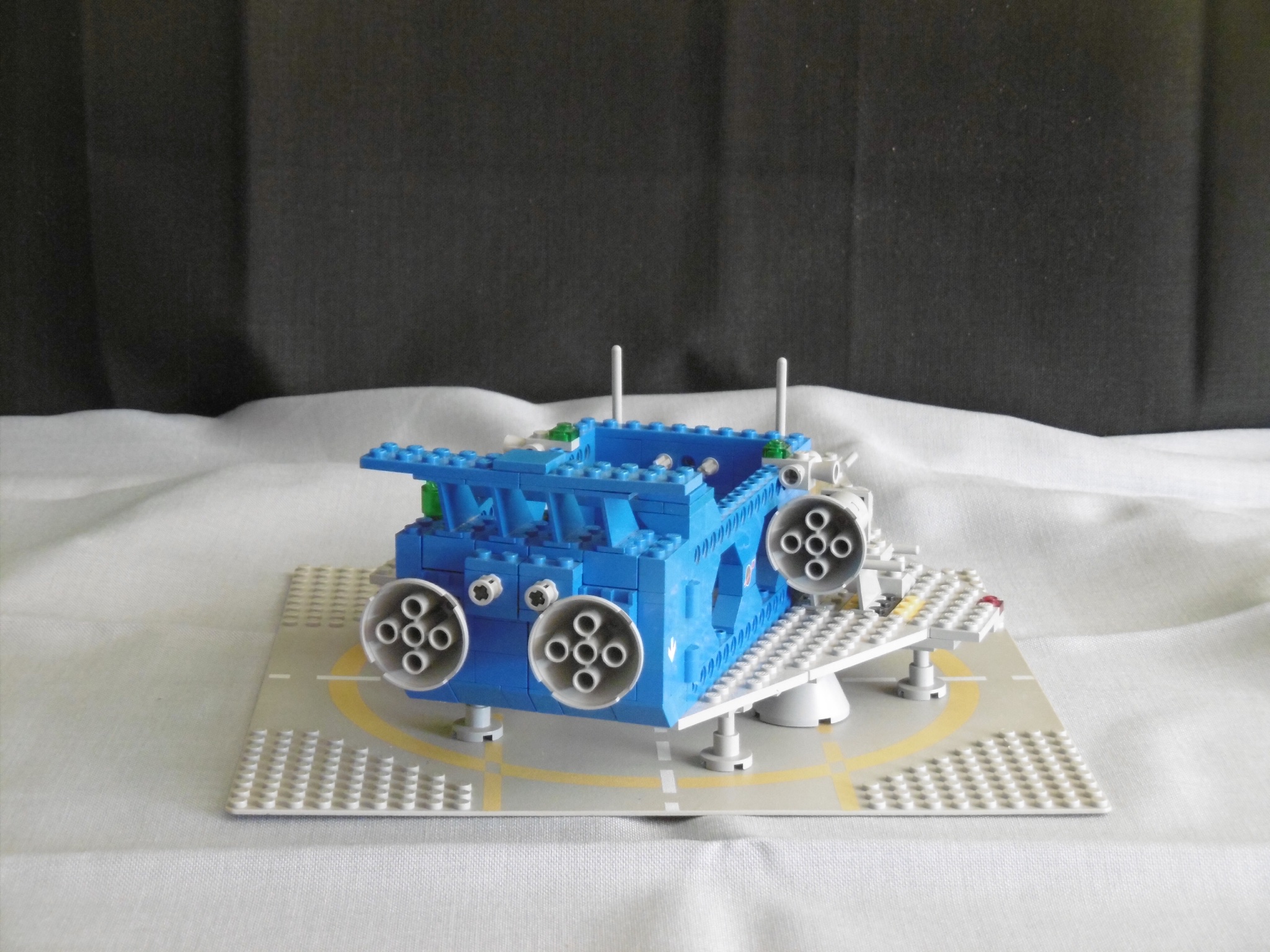 Rear view: There are 2 axle pins in the front of the cargo area. These pins and the axles inside the locking mechanism will fix the SCU container/module.
Rear view: There are 2 axle pins in the front of the cargo area. These pins and the axles inside the locking mechanism will fix the SCU container/module.
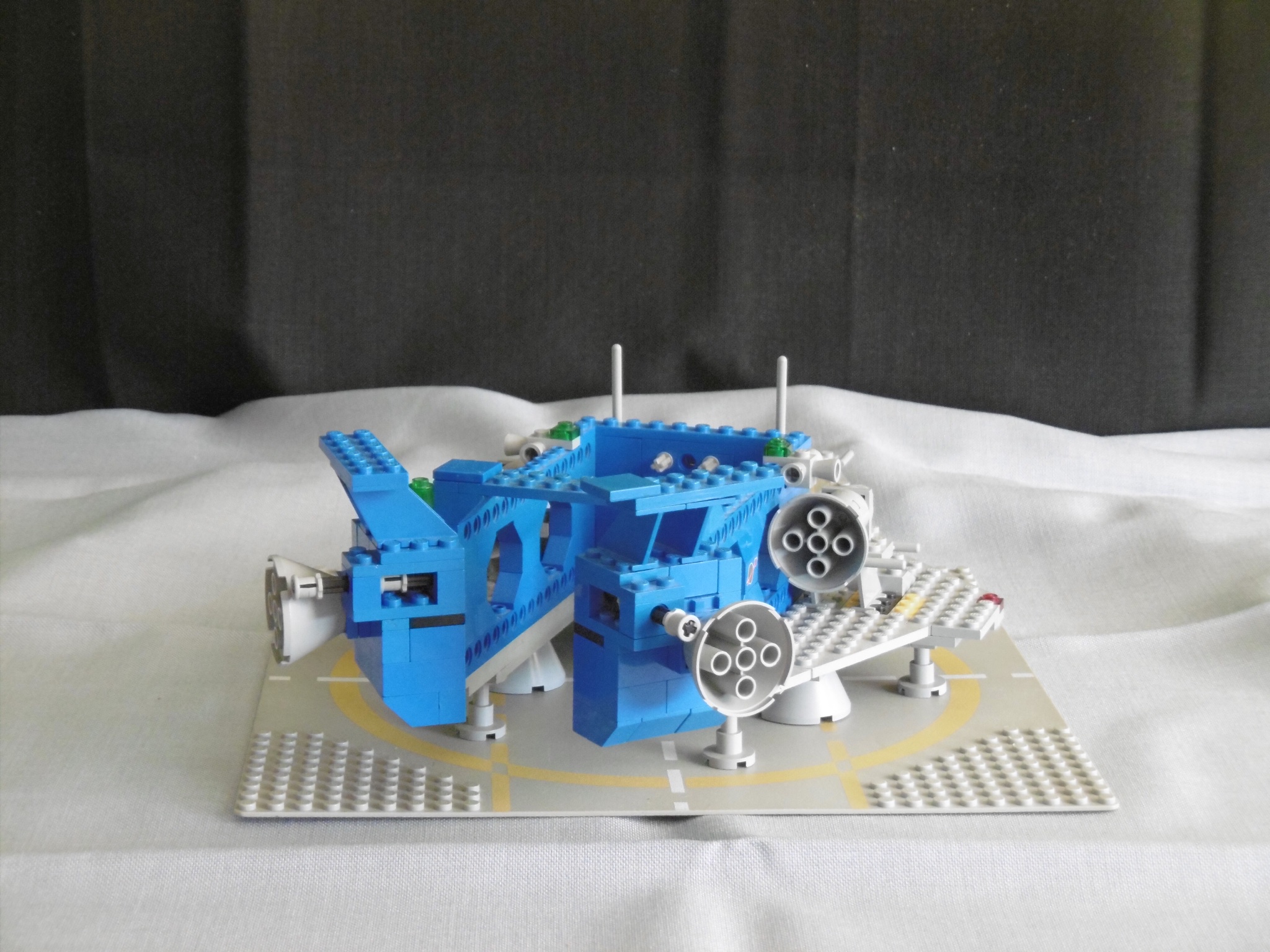
Doors opening. The locking mechanism is quite simple: 2 Technic bricks, a 6L axle and 2 stopper bushes on each side. It’s a compact version of the mechanism that I’ve used for the LL 926 Space Crane.
 And closed, ready for take-off.
And closed, ready for take-off.
 Side view with container and closed doors.
Side view with container and closed doors.

LL 928-C compared to the original LL 928: The cockpit section starts three studs more in the front and is much shorter. The cargo area is much longer and 2 studs wider. The grey 2×3 slopes in the middle are lifted by one plate to add some extra rigidity to the frame below. The additional rocket engines on the side each have 2 post instead of 3.
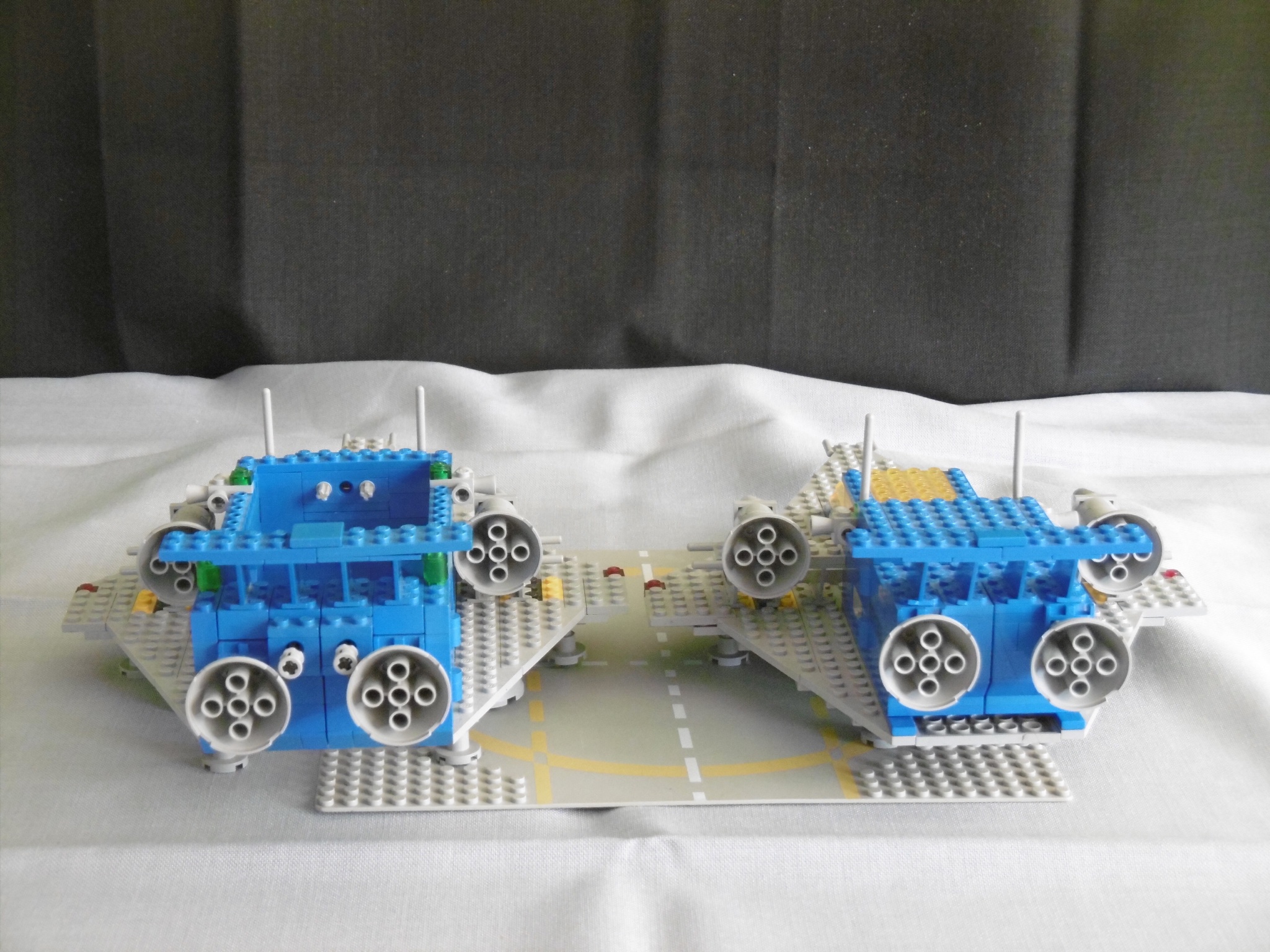 Rear view: The extra two studs in the width are widening the rear wing section, too. The rocket engines have to be placed a little lower to get space for the locking mechanism between them.
Rear view: The extra two studs in the width are widening the rear wing section, too. The rocket engines have to be placed a little lower to get space for the locking mechanism between them.
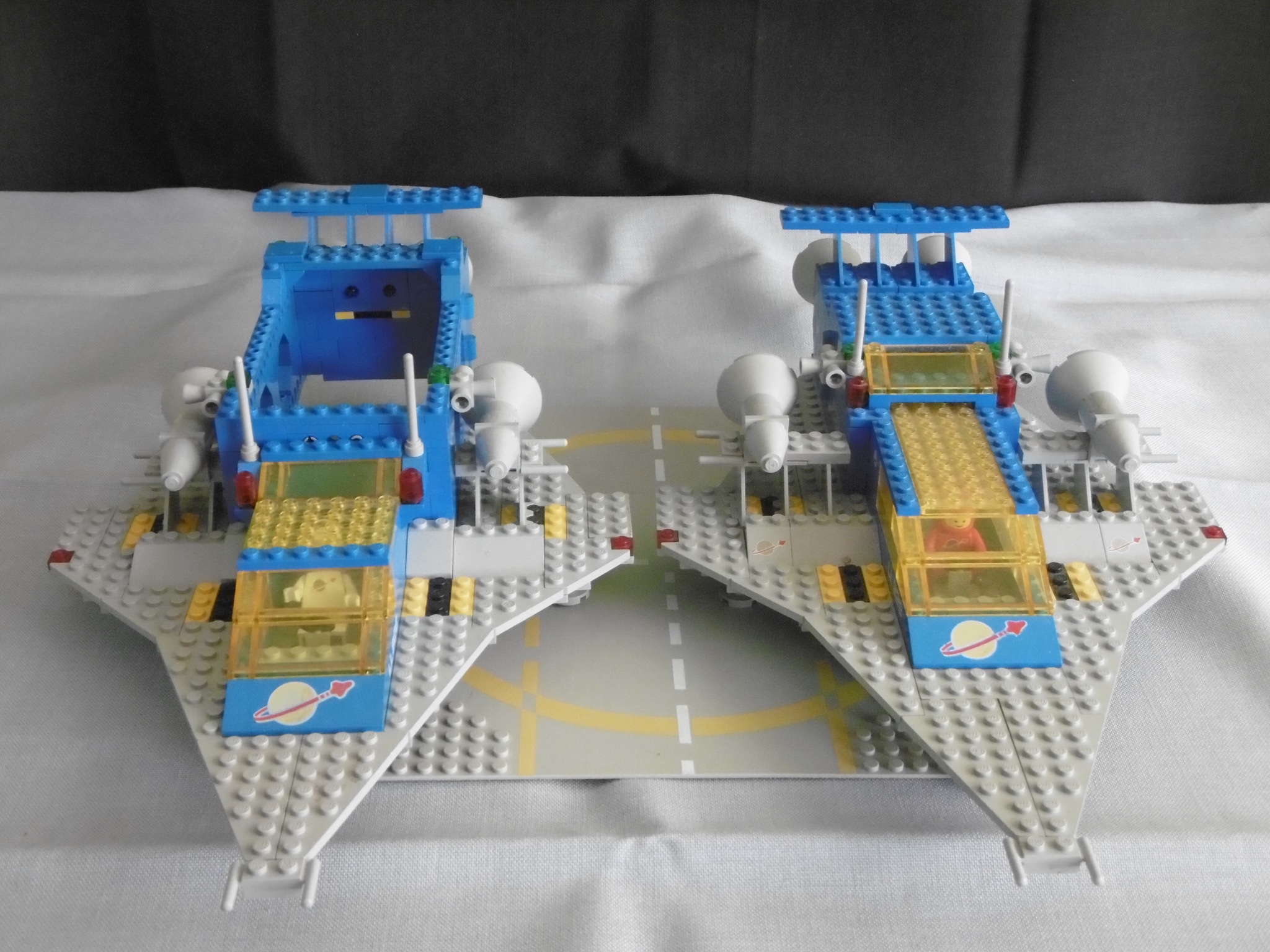 “Birds eye” front view. The LL 928-C really looks familiar.
“Birds eye” front view. The LL 928-C really looks familiar.
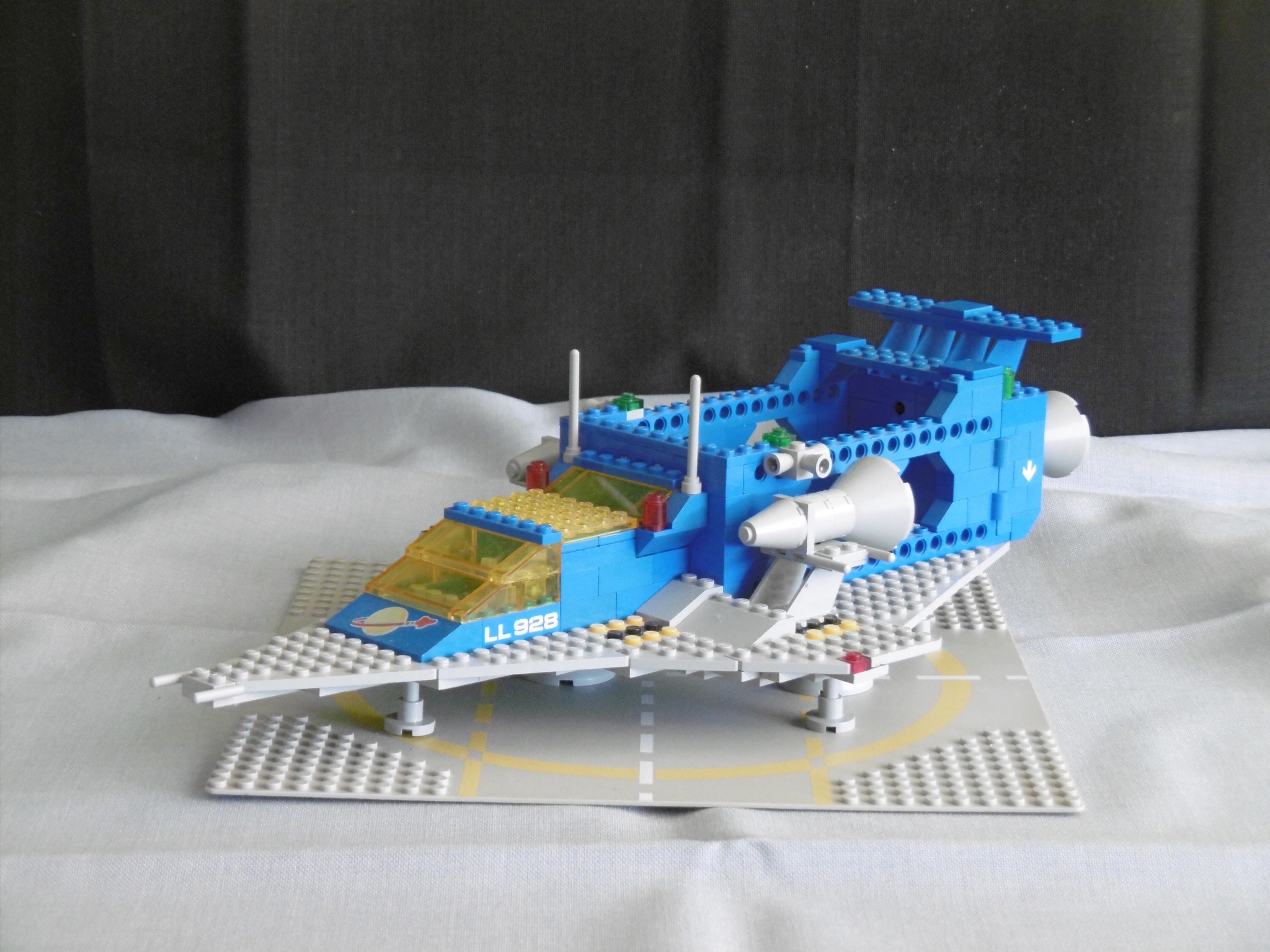 So this is my Lego Classic Space LL 928-C, a cargo version of LL 928. For me it looks like a semi truck for space transport.
So this is my Lego Classic Space LL 928-C, a cargo version of LL 928. For me it looks like a semi truck for space transport.
I hope you like it :-)).
OK, here is another transporter for my “SCU” Containers.
I think it’s time for some payload…
My 1979 version of the iconic Starfleet Voyager.
The Starfleet Voyager was one of the Lego model I always wanted to have. My cousin had one, one of my friends, too, but I didn’t.
A few years ago I found out that my brother did also “have” one, in a weird kind of way: He had the infamous 1593 “Super Model”, a quite ugly spaceship made with the parts from the Starfleet Voyager and the 6880 Surface Explorer. I didn’t know that before, but back in the early 80s it wasn’t easy to get the building instructions, either.
Now I had three ideas: I could search in my CS boxes for the parts (I’ve traded my Playmobil with my brother’s Lego a few years ago, so his parts are now mine). I could also buy a set on Bricklink. And last, but not least, I could build a modified version of the model using the iconic grey/blue/trans-yellow colour scheme from 1979/1980. As you can see, I chose the third idea.
But I didn’t just want to replace the trans-blue parts with trans-yellow ones and the white parts with blue ones. I tried to modify the design in a way that the Starfleet Voyager looked like a member of the original 1979 space fleet. For that I also eliminated all the parts that were new in 1981 and replaced them with parts available in 1979.
Finally I bought a set of custom printed bricks with “LL 929” Lettering. In fact, the original Starfleet Voyager has the set number 6929. So after the change to 4-digit model numbers and all Space models starting with a six, it is the legitimate “LL 929”.
And now it’s time for some photos:
The cockpit section is new, with one more brick in height above the wings and one less below.
The “backbone” is new, too. I chose to use Technic beams to create a more rigid structure. I also changed the wing shape of the rear part replacing a pair of 4×4 wedge plates with a pair of 4×8 ones.
The cargo area looks quite the same as on the original model. I only changed the inner supports for the cargo box to create room for bigger boxes. Instead of a 4x6x3 box the ship can now carry a 6x6x4 box without changing the exterior shape.
So this is my “LL 929” version of the “Starfleet Voyager” in 1979 design. I hope you like it :-)).
A Cargo System for (Classic) Space Minifig scale models based on standard cargo units (similar to ISO Containers).
ISO Containers are a great idea and nowadays they can be found anywhere. Even break rooms on construction sites and office buildings are built with units based on ISO Transport Containers.
I wanted to have a similar system for my Classic Space models: a cargo unit with the right size to be transported with cargo ships and big enough to carry everything you need in space and even to build a room inside – just like ISO Containers in our world.
My favourite dimensions for a “Space Cargo Unit” (SCU) were: a footprint of 8×16 studs and 8 bricks of height – No longer than the longest Technic beam, wide enough for a 6-wide interior of a room and high enough for a Minifig to stand inside with comfortable headroom.
I’ve already used the SCU for some models in the last few months:
A simple transport cage can carry 6-wide vehicles as a roll-on-roll-off carrier and 8-wide scooters. Transport boxes and other Space Cargo Units are easy to build in endless variations – Expect to see more, soon ;-))
My 4-wide version of one of the most minimalist roadsters ever built, the Lotus Seven
The Lotus seven was such a simple car: Four wheels, an engine, a cigar shaped body which just covered the chassis, two seats and a steering wheel. The result was a very light car which didn’t need a big engine to have fun, fun and more fun (when the weather was fine).
The inspiration for this model was the big Lego Ideas model of the Caterham Super Seven (21307). I wanted to build my own 4-wide version quite for a while, but I had no idea for the mudguards. I wanted to use the smallest ones which made the original car look almost like an open wheeler. After all, the solution was simple: I had to use really old parts – the mudguards from the first 2- and 4-wide Lego cars from the late 1970s / early 1980s. I was lucky to find some in my old Lego boxes in the basement.
The yellow of the Ideas model wasn’t my favourite colour at all. I’d loved to make a dark green one, but the mudguards didn’t exist in that color. So black was my favourite among the available colours.
The rest of the car is mainly a (more or less) 2-wide cigar shaped body with some chrome parts, a simple interior and two white side pipes:
So this is it, my 4 wide Lego Lotus Super Seven.
I hope you like it :-))
My 4-wide version of the iconic Porsche 911 GT3 (997) hybrid.
It has been a while that I haven’t posted a 4-wide car. The reason wasn’t that I didn’t build them anymore. I was just busy with other projects and forgot to take decent pictures of the 4-wides I had built.
When the 75912 Speed Champions set with the 911 GT3 hybrid was launched I knew I had to build my 4-wide version of it, too. Then Malte Dorowski posted his pictures of his two versions in different scales (next to the SC model) and they gave me the final kick to start building.
That was more ore less two years ago, so you see that this one has been waiting on the shelf quite for a while…
The base is my 4-wide 911. Only the “paint job” and the rear end are new for the GT3 hybrid, but I really like the result:
Rear view: The new rear end with the big wing and the diffusor.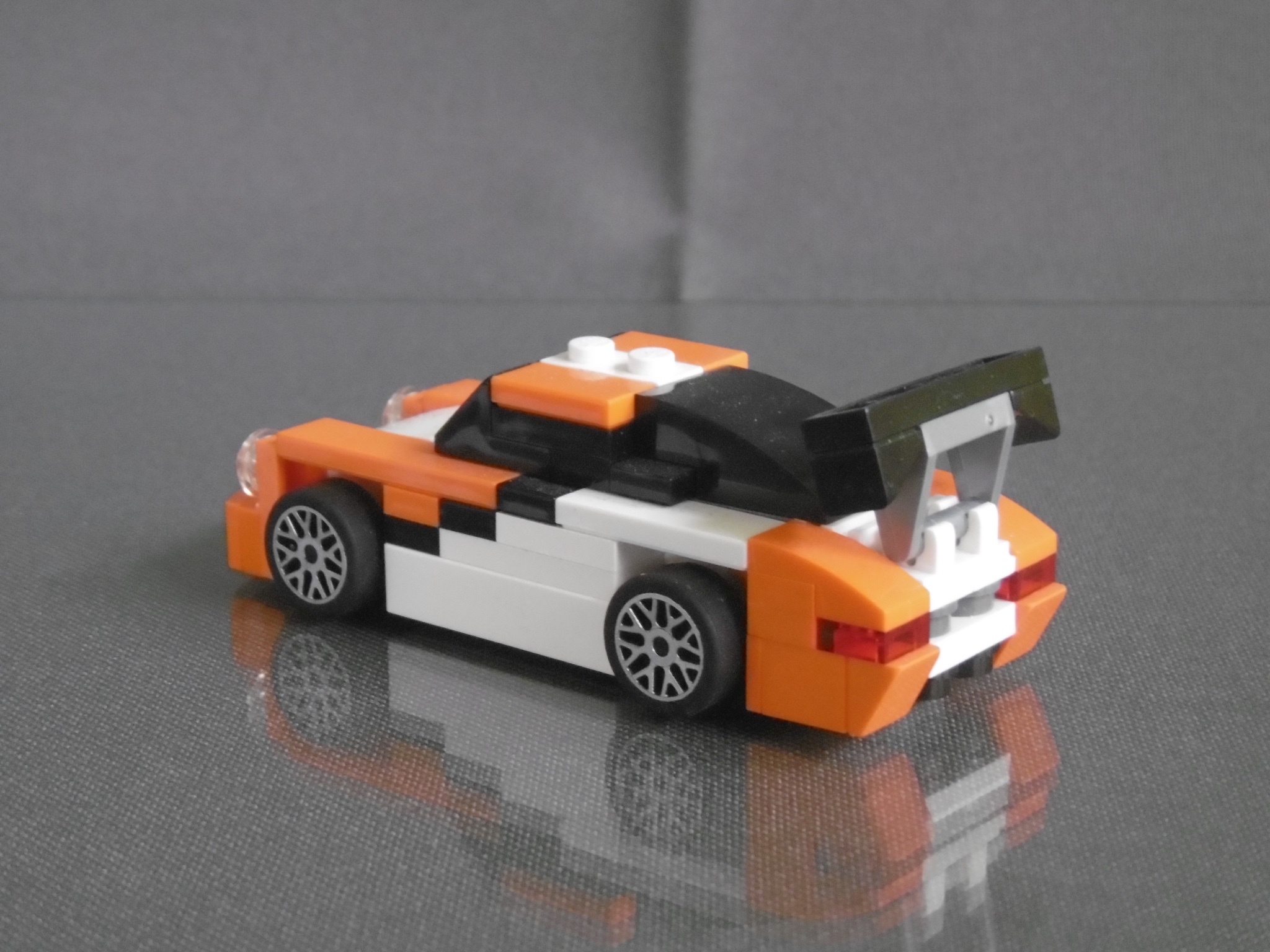
 So this is my 4-wide Lego Porsche 911 (997) GT3 hybrid.
So this is my 4-wide Lego Porsche 911 (997) GT3 hybrid.
I hope you like it :-))
Porsche 911 GT3 hybrid (4-Wide)
BrixBlog | flickr | MOCpages
A Magic Folding “Fidget” cube with the design of a micro scale space ship in a Classic Space white/grey/trans-blue colour scheme.
So, what next? The third Classic Space colour scheme, of course: white/grey/trans-blue. Once more the micro model is a spaceship.
The Folding steps:
2.)*

*… Oops, 1.) is missing (I forgot to take this photo – Imagine the cuboid in spaceship mode being folded by 90 deg around the hinges on the “belly” of the spacehip. The cockpit winds are folded to the outer corners and the white grills)
Here it is, the third and last one (for now) of my Lego Magic Folding Classic Space Cubes.
I hope you like it! :-))
A Magic Folding “Fidget” cube with the design of a micro scale space vehicle in a Classic Space grey/trans-green colour scheme.
The next colour scheme for a folding cube with a Classic Space design is grey/trans-green. The basic idea is a hovering ground vehicle used as a mobile planetary station.
The “vehicle mode”: A planetary hovering vehicle with a big cockpit, some windows, lights and greebles.
Rear view: Tail lights, two propulsion engines and the black “hover pods” on the “belly” of the ship.
The folding steps:
1.)
… and back to vehicle mode … This is #2 (of 3) of my Lego Magic Folding Classic Space Cubes.
This is #2 (of 3) of my Lego Magic Folding Classic Space Cubes.
I hope you like it! :-))
A Magic Folding “Fidget” cube with the design of a micro scale space ship in a Classic Space blue/grey/trans-yellow colour scheme.
The Borg Cube was my first idea for a magic folding “model” cube, a CS space ship was the next one. Being a fan of the first generation as I am, the colour scheme had to be blue/grey/trans-yellow.
The “ship mode”: A space ship with a big cockpit, a few windows, lights and some greebles.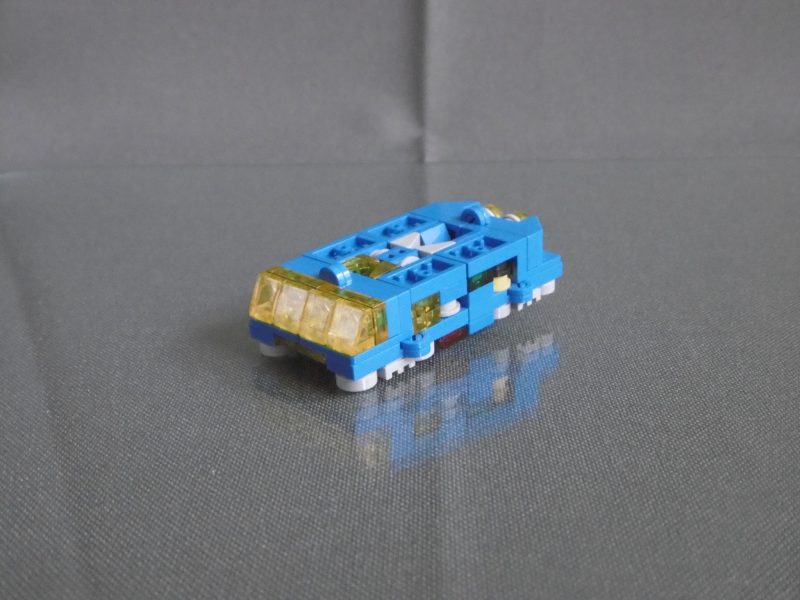
Rear view: Two engines on the rear end, some landing pods and grills on the “belly” of the ship.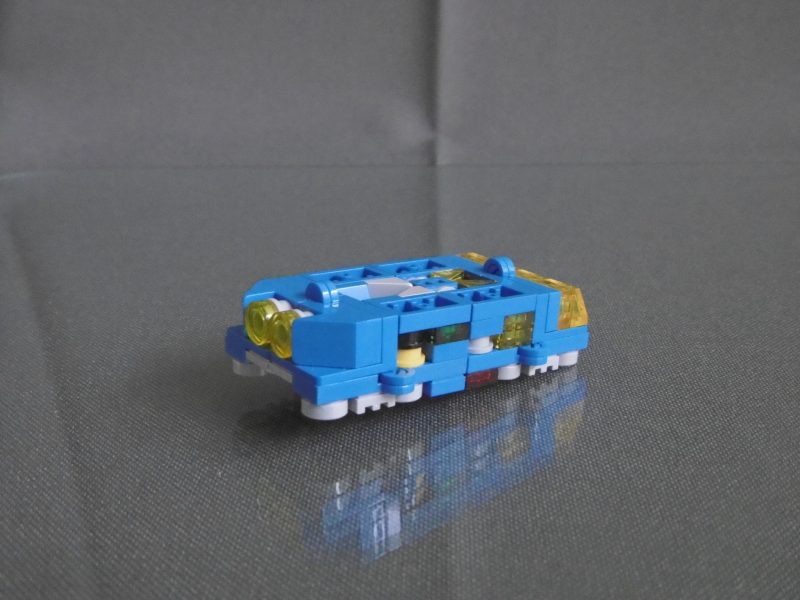
The folding steps:
… and back to ship mode … This is #1 (of 3) of my Lego Magic Folding Classic Space Cubes.
This is #1 (of 3) of my Lego Magic Folding Classic Space Cubes.
I hope you like it! :-))
RESISTANCE IS FUTILE – THIS CUBE HAS BEEN ASSIMILATED… A Magic Folding “Fidget” Cube inspired by a Star Trek Borg cube.
As a Star Trek geek as I am, one of the first ideas for a new and more interesting design for a folding cube was, of course, a Borg cube.
So I started with a black “skeleton” of my folding cube (version A5) and added black and trans-green details that looked as “Borg” as possible. This is the result:
This is my new Lego fidget toy, the Magic Folding “Borg” Cube.
I hope you like it :-))